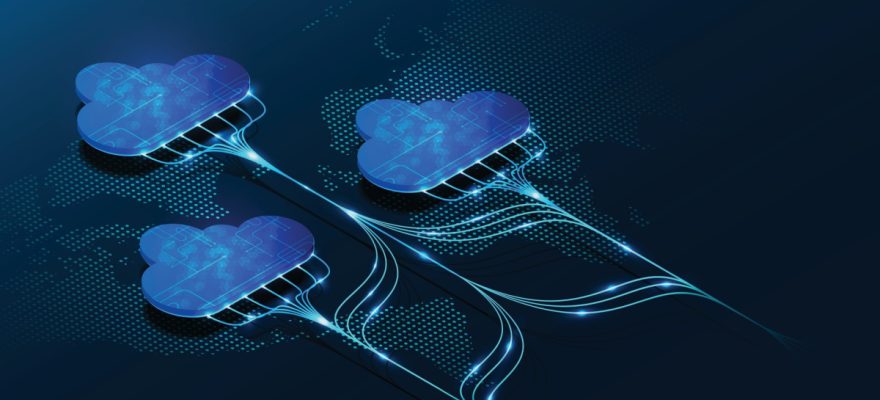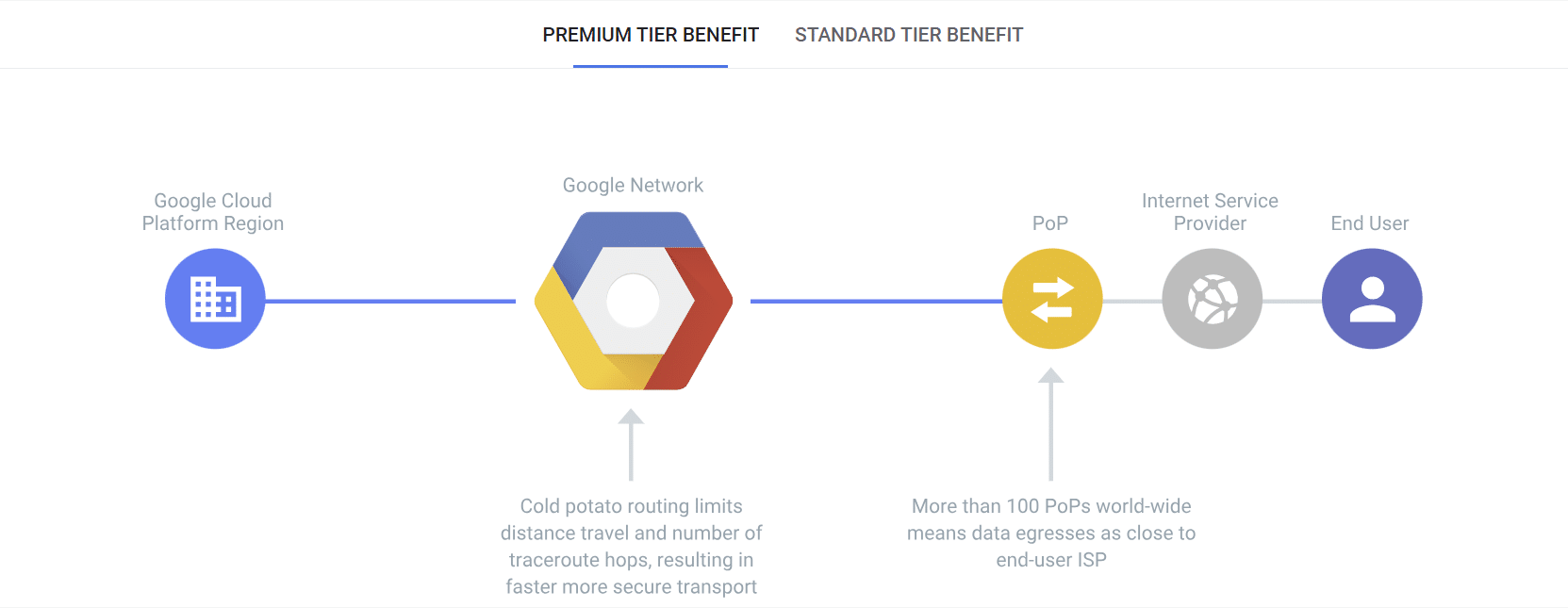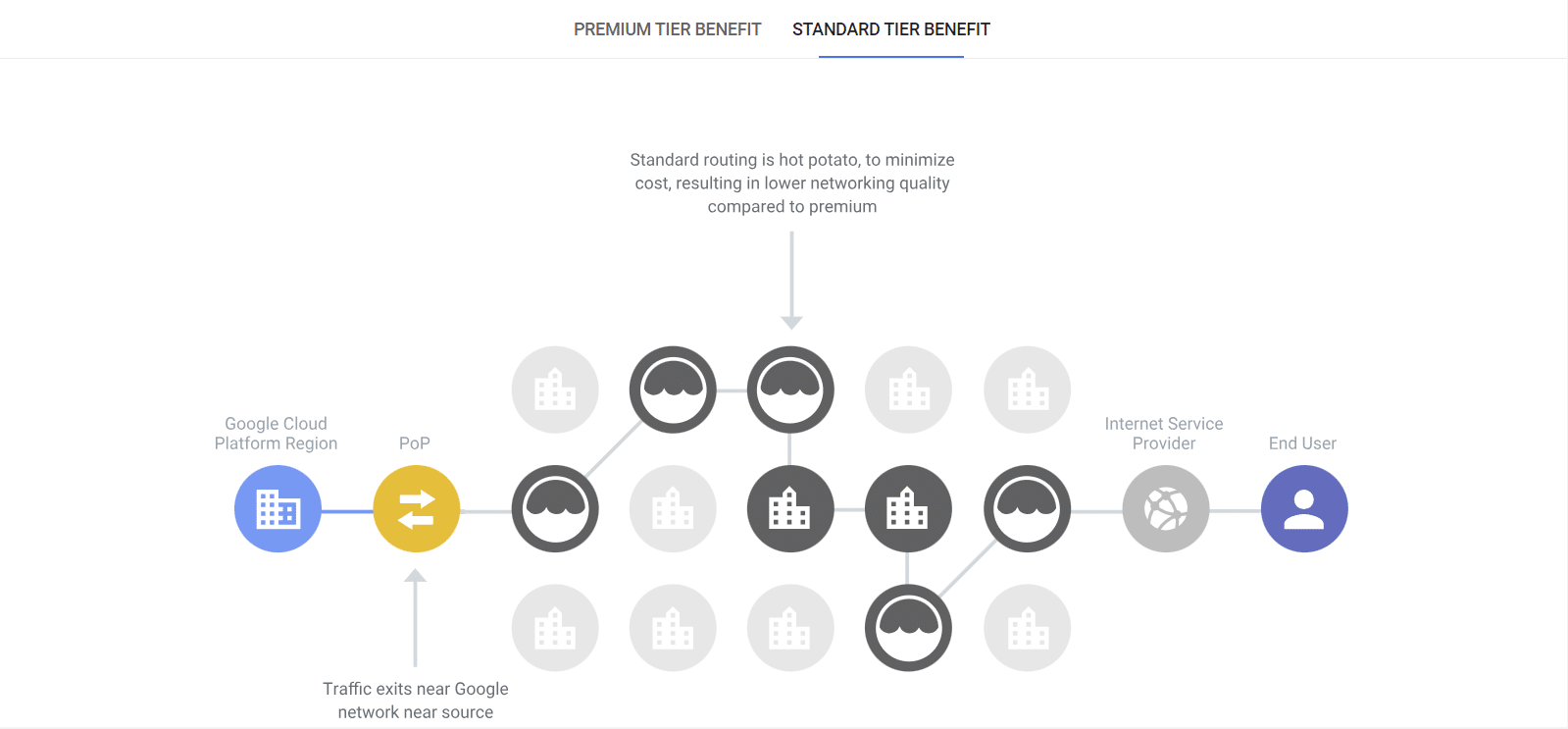The golden promise of premium network products
Cloud computing has fundamentally altered the tech landscape, enabling an unprecedented level of connectivity and processing power. With processing power or compute resources increasingly becoming a commodity service, premium connectivity products have taken rise to stand out from the flock. This is with good reason, because as the digital highway propels our increasingly virtual world, these services promise low latency, no jitter or packet loss and connection that is as secure as possible. Businesses around the globe leverage these services to ensure seamless and resilient user experiences, be it for video conferencing, online multiplayer games, streaming services or virtually any other web-based application.
The dilemma of public cloud egress costs
As enticing as premium network products are, they come with an equally daunting obstacle: the additional cost on top of the already “premium” egress cost for standard network products. ‘Egress cost’ is a term used to describe the charges associated with data leaving a public cloud provider’s network, which needs to be a key consideration for businesses running high-traffic volume applications, as this will come with significant costs.
Most public clouds have had no issues with charging high costs for egress. At the end of the day, their purpose is to keep as much data within their own ecosystems since they offer a vast array of services hence, “punishing” any data leaving their ecosystem. And yes, the invoice at the end of the month can hurt.
Why businesses invest in public clouds’ premium network products despite high costs
Despite high egress costs and the additional cost that premium network products put on top, there are many organizations that prefer to leverage premium network products. Why? There are plenty of reasons, but it boils down to the need for consistent, high-speed and reliable connectivity that scales along with your applications. The cost of a network outage or slow connection far outweighs the financial expense of egress costs and premium network products as it may impact user experience, damage your brand reputation and end up losing potential business if your application is not reachable.
With that, let’s dive into two public clouds and the premium network products they offer on top of their regular connectivity and egress costs: AWS Global Accelerator and Google Cloud Platform’s (GCP) Premium Network.
AWS Global Accelerator in a nutshell
AWS Global Accelerator is a network service that simplifies traffic management and improves performance by up to 60%i. It provides users paying a premium — on top of the regular AWS egress costs — a way to bypass internet congestion, optimize the network path and boost data transfer speed.
The service directs traffic to an optimal endpoint based on the application’s health and network conditions. This ensures improved availability and performance, reducing the latency of applications by the stated 60% and improving resistance to DDoS attacks. On top of that, it has additional features such as anycast capabilities, TCP edge termination and custom routing accelerators.
How does the AWS Global Accelerator affect latency-sensitive applications?
For real-time applications like multiplayer games, previously mentioned software features in the AWS Global Accelerator are unnecessary as the core importance for multiplayer games for instance, is to ensure that the traffic between the gamer and the game server stays as local as possible, and if not, it travels over a private backbone to avoid public internet congestion (which may result in a sub-optimal player experience). This means that the only aspect of the AWS Global Accelerator relevant for game servers would be the announcement of IP addresses from multiple AWS edge locations at the same time to ensure global performance-based routing over their backbone.
The GCP Premium Network in a nutshell
GCP also offers a solution to enhance the GCP Standard Network, which is dubbed the “GCP Premium Network”. This service is designed to deliver robust performance, providing low-latency, high-throughput and reliable connections at a premium on top of the regular egress cost.
Unlike GCP’s standard network, which uses the public internet over long distances, its Premium Network leverages Google’s private global fiber and its edge-caching services. This effectively allows traffic to enter Google’s network as close to the client as possible, traveling over Google’s dedicated infrastructure and exiting as close to the destination as possible, resulting, in theory, in faster and more secure data transfers.
What impact does GCP Premium network have on latency-sensitive applications?
According to their website, in GCP’s standard network, their routing is cost optimized rather than performance optimized. Referring to the images below from GCP’s website, the differences between the two form a stark contrast.



